SPOTLIGHT
Hospital histories – 151 years later, the drumming of little feet at Brooklyn Chest Hospital

In 1984, the then head of Brooklyn Chest TB Hospital, Dr David Jenkin, lamented inadequate services for TB patients, writing that ‘it is unflattering to realise that only war and pestilence appear able to bring more beds for TB sufferers’. Almost 40 years later, despite major scientific advances, TB hospitals like Brooklyn Chest remain important for treating complicated forms of the disease, where specialised staff can monitor medication interactions and side-effects. Biénne Huisman looks at the hospital’s 151-year history and the difference it is making in the lives of children with TB today.
As Dr Julian te Riele unlocks a steel gate, excited young voices yelp: “Doctor, doctor, doctor!” Soon after, little bodies are huddled and pressed around his legs.
Sadly, says Te Riele, many of the tiny TB patients at the Brooklyn Chest Hospital in Milnerton, Cape Town, won’t have family visiting them during their hospital stay, which can last anything from three months to three years. Some of the child patients are orphaned while others’ parents aren’t in a condition to visit. An additional caveat, he says, is that few people are willing to adopt an orphan who has had TB.
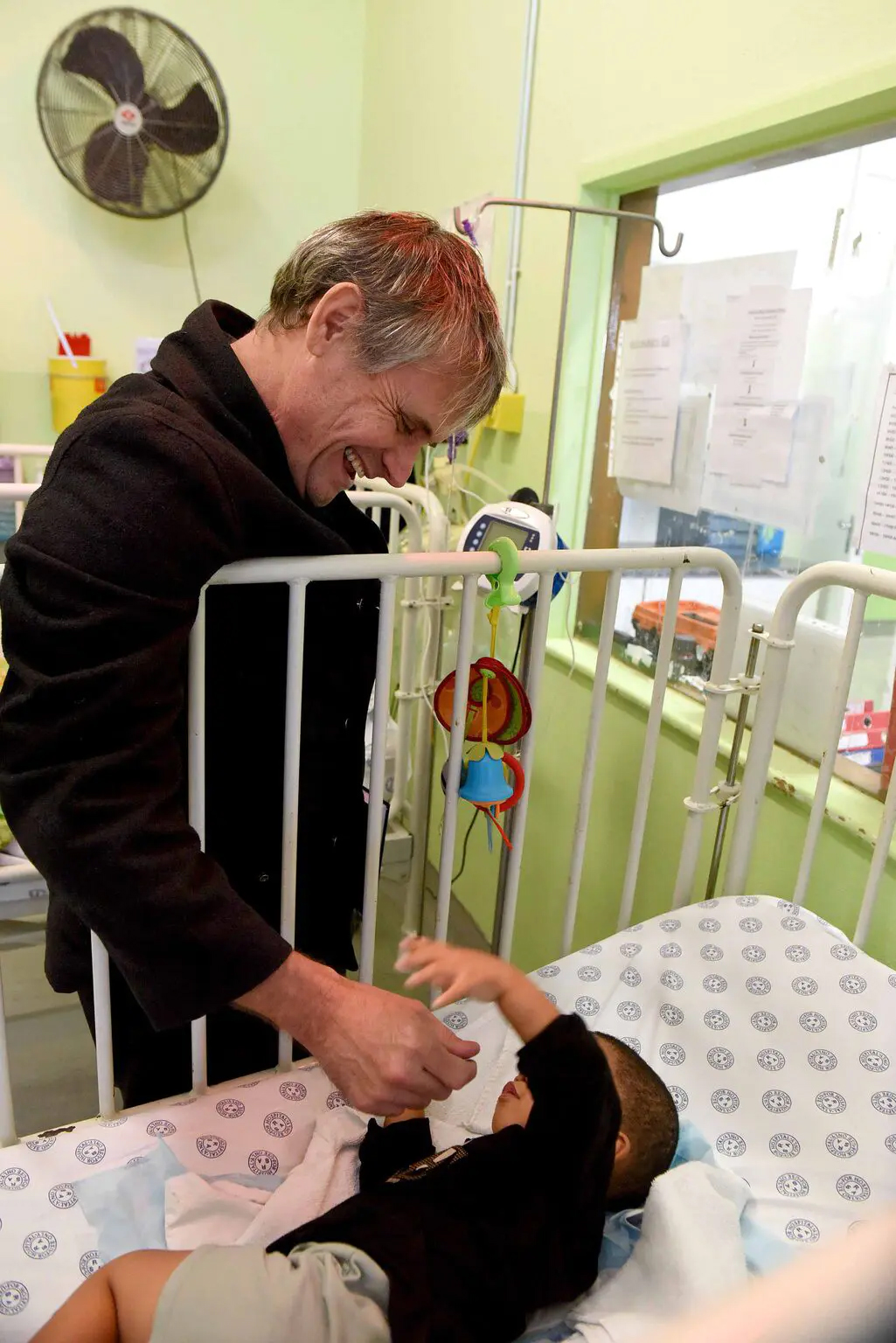
Dr Julian te Riele, a family physician, stressed that TB is curable and his clinical satisfaction comes from not ever giving up on his patient. (Photo: Nasief Manie / Spotlight)
The walls of the children’s ward are covered in illustrations of fish and seaweed. A long corridor – now drumming with excited little feet – leads past rooms with metal cots, bright folded blankets and stuffed toys. Sister Leonie Weyers approaches, swooping a little girl into her arms. Further along, windows look into a room where, currently, seven young patients are battling TB meningitis. In this room, babies and toddlers are asleep in cots, their little bodies encircled with tubes. Te Riele says the children’s ward has a significant palliative care unit as TB meningitis causes severe brain damage and is often fatal.
“All TB enters through the lungs,” he says. “Kids, because they don’t have well-developed immune systems, are more prone to get TB elsewhere in the body, including the brain. Within our palliative care service they have a system of intervention levels, he adds, speaking above the din of young voices. “There’s only one patient at the moment who is expected to die during this admission and won’t be escalated [to higher levels of care]. Another two patients may be escalated but are not candidates for the paediatric ICU [intensive care unit].”
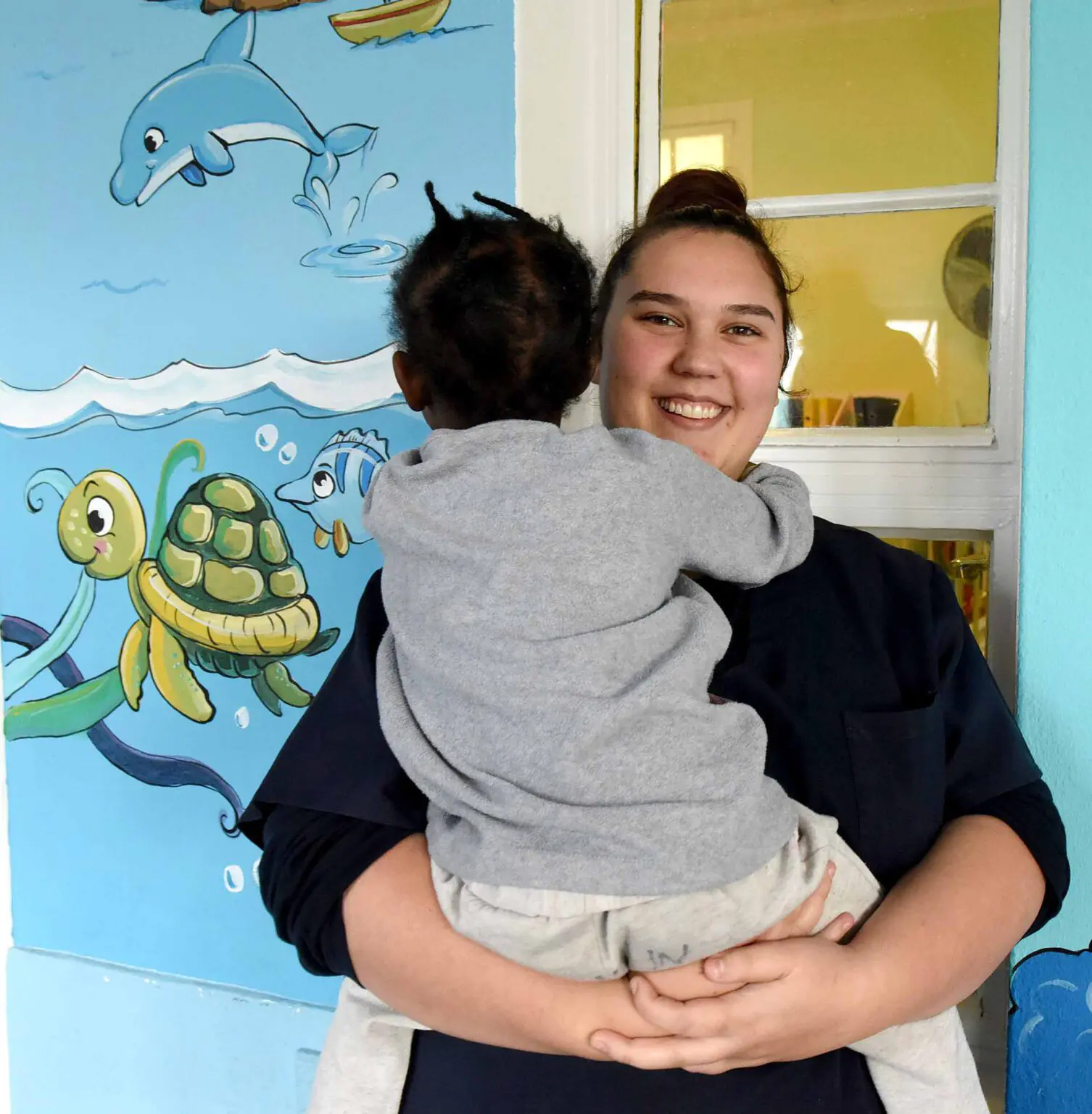
Sister Leoni Weyers, one of the healthcare workers at Brooklyn Chest. (Photo: Nasief Manie / Spotlight)
Many of the children are full of energy. There’s a school on the premises for those of school-going age. Presently, there are 10 of them. Inside the ward, staff are not wearing masks while feeding the children.
“Infectious patients are identified but at the moment there’s no one regarded as an infection risk in the ward,” says Te Riele.
Commenting on risk to staff at the hospital, he says: “As much as we are regarded as high-risk by many, I don’t think it’s true. The high risk is the undiagnosed patient in your casualty wards, those who come in and who are not wearing a mask and who are not on treatment.”
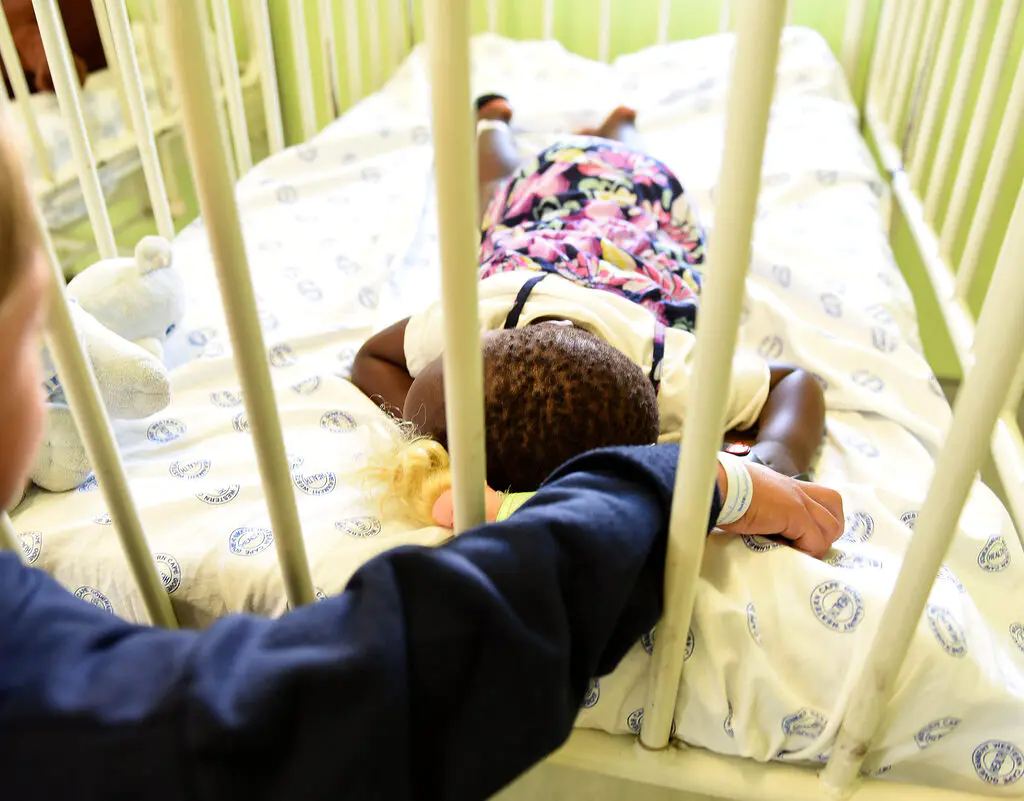
The hospital welcomes volunteers who read to their young patients. (Photo: Nasief Manie / Spotlight)
A rich history
Brooklyn Chest Hospital consists of several yellow buildings scattered across large grounds, on what was once a horse and merino farm belonging to German immigrant Johan Rentzke. The farm, situated on the edge of Paarden Eiland [Horse Island], had a notable neighbour – horseback shipwreck hero Wolraad Woltemade.
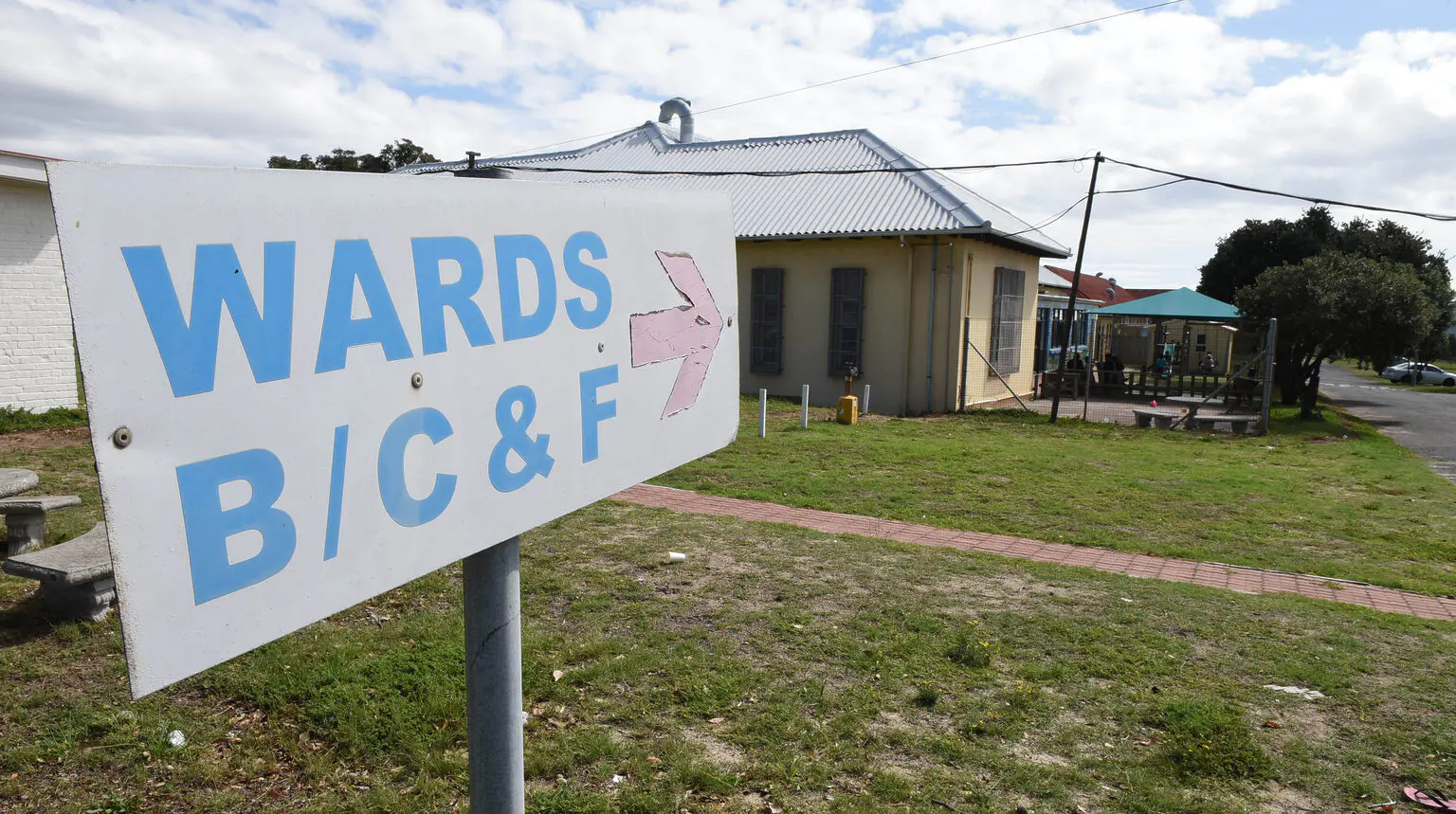
Brooklyn Chest Hospital consists of several yellow buildings scattered across large grounds, on what was once a horse and merino farm belonging to German immigrant Johan Rentzke. (Photo: Nasief Manie / Spotlight)
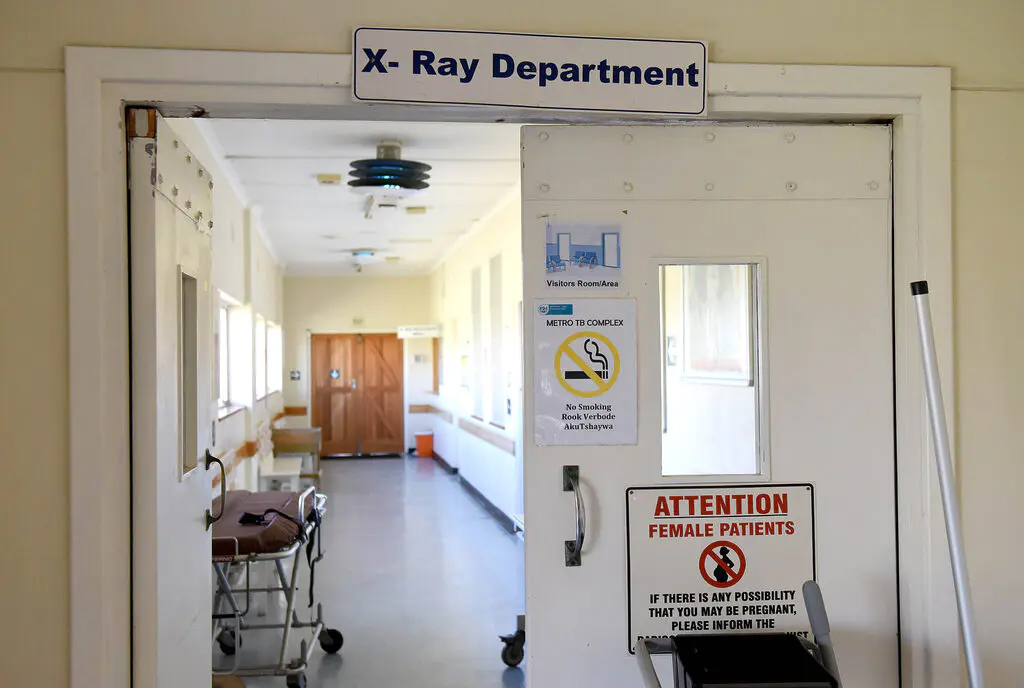
At Brooklyn Chest Hospital, patients with drug-sensitive and multidrug-resistant TB are treated on a referral basis. (Photo: Nasief Manie / Spotlight)
The Cape Colony government bought the farm in 1872 for isolating people suffering from “formidable infectious diseases”, notably smallpox, plague and typhus, while more common infectious fevers were treated at City Hospital [now Somerset Hospital] in Green Point.
In 1918, the “Spanish flu” epidemic that killed millions worldwide arrived in Cape Town via passenger ship, prompting the construction of six additional isolation wards on Rentzke’s farm. These were “designed to accommodate different social classes of patients,” writes Dr David Jenkin, who headed the facility from 1979 to 1984. Jenkin penned bits of the hospital’s history that current CEO, Waheeda Sonnie, provided to Spotlight. Jenkin notes that more wards were added during World War 2, which, after the start of apartheid in 1948, were used for treating “men of colour”.
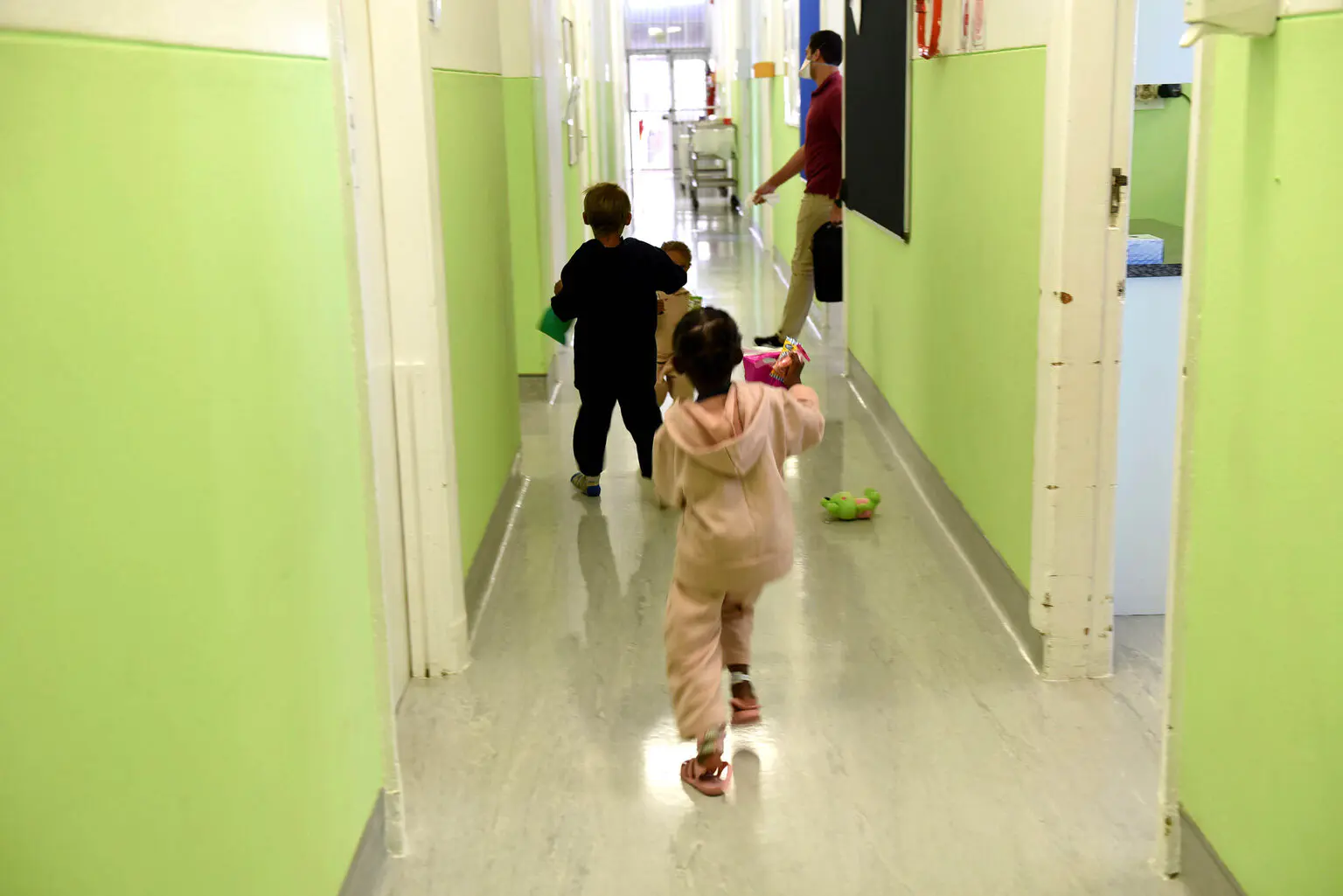
Children treated at Brooklyn Chest Brooklyn are aged between two months and 12 years, and the duration of their hospital stay can be three months or up to three years. (Photo: Nasief Manie / Spotlight)
From the mid-1950s, the hospital stood abandoned until Jenkin’s tenure began in 1979. “It stood in supreme isolation, spoiled by vagrants, abundant in wild animal and bird life, and overgrown vegetation,” he writes. “No patient had been admitted for 25 years… then the grounds were cleared, catching 28 snakes in one day, and the buildings were renovated.”
Back in 1984, he lamented the inadequate services for TB patients.
“It is unflattering to realise that only war and pestilence appear able to bring more beds for TB sufferers. Perhaps it will require a third world war to bring further additions and to force Cape Town and South Africa to realise that the Mother City has about half a bed for every TB death,” he writes.
TB hospitals still needed
Seated around a table in a large boardroom with patches of moisture seeping through the ceiling, Te Riele says: “In terms of apartheid and the political situation in the country, TB is a disease of the poor. I suspect that this hospital was part of a number of services that were neglected by the apartheid government. It was for predominantly poor people, who were predominantly black. They were the people getting TB in the underfunded and undersupported healthcare system of our racist past.”
While straightforward TB infections are increasingly treated closer to patient homes, Te Riele and Sonnie agree that TB hospitals remain important for treating complicated forms of the disease, where specialised staff can monitor medication interactions and side-effects, among other things.
Sonnie points out that 60% of their patients are also living with HIV.
“HIV complicates TB and TB treatment,” she says. “There are interactions between TB, HIV and other medications, such as hypertension meds, diabetes meds… There are also side-effects of the medication that need to be strictly monitored because some of the stuff that we use can be dangerous.”
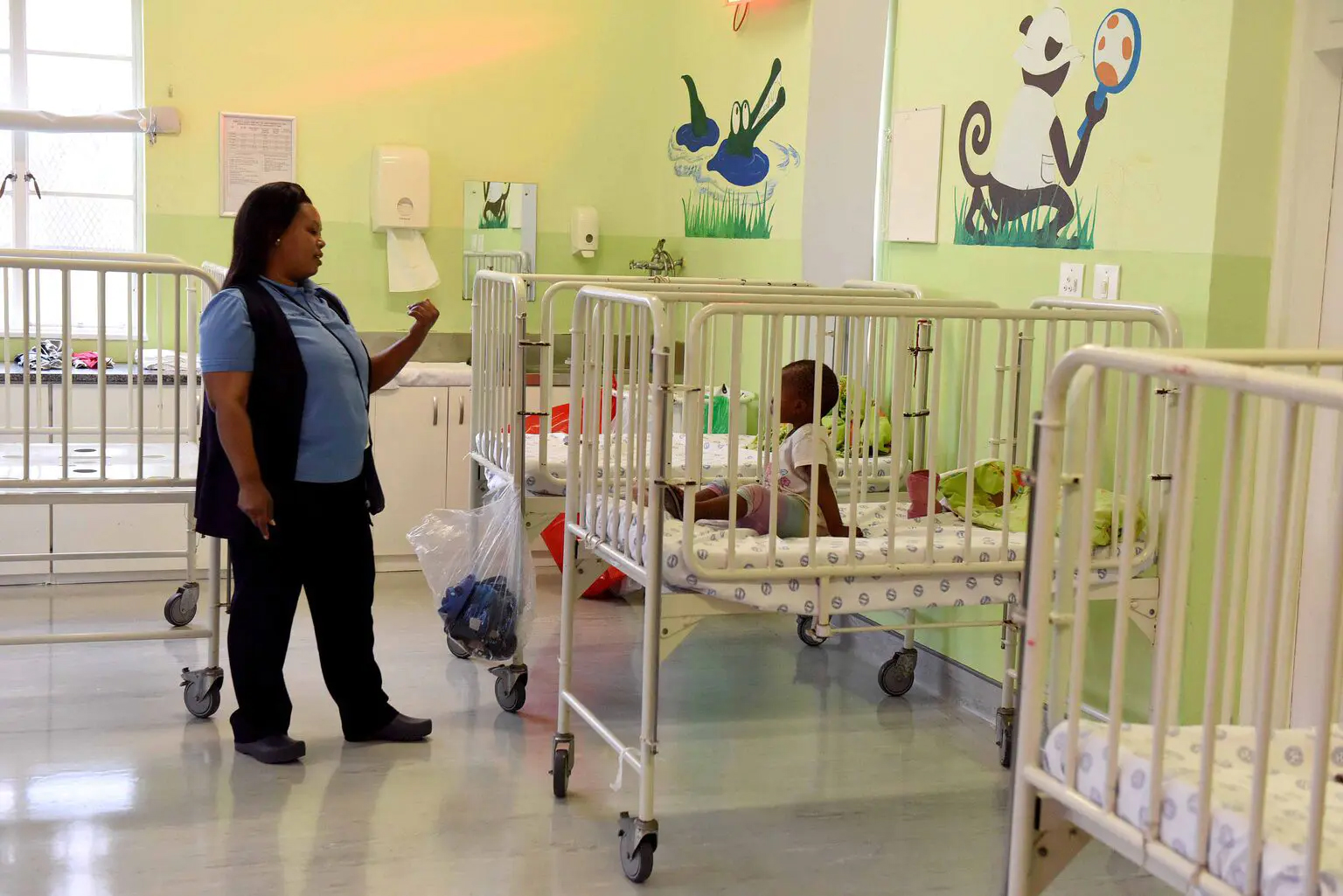
Some of the child patients are orphaned while some parents aren’t in a condition to visit. (Photo: Nasief Manie / Spotlight)
A race against drug resistance
As always, TB treatment is a race against ever-building drug resistance. In 2013, Brooklyn Chest was a pioneering administrator of the drug bedaquiline to treat multidrug-resistant TB in South Africa. Four years later, it was widely rolled out across the country.
“There’s a baseline level of resistance to all drugs,” says Te Riele. “But once new TB drugs are used programmatically, there seems to be about a seven- or eight-year golden period before the resistance starts to develop. As for bedaquiline, we’ve started seeing resistance already for the last three years, four years.”
He adds that the solution is not new drugs but better living standards for poor people. “In my view, new drugs are not going to solve the problem. Until the economy improves and people just generally have their standards of living raised, we are not going to see an end to this epidemic.”

While straightforward TB infections are more and more treated closer to patient homes, some agree that TB hospitals remain important for treating complicated forms of the disease. (Photo: Nasief Manie / Spotlight)
Once a private-sector GP, Te Riele veered into the public sector seeking better job fulfilment. In 2014, he completed a master’s degree in extensively drug-resistant TB at the University of Cape Town, where study leaders included Professor Keertan Dheda, a pulmonologist and critical care specialist who heads up the Division of Pulmonology at Groote Schuur Hospital and UCT.
Since 2012, Te Riele has been clinical manager and lead physician at the Western Cape’s Metro TB Hospital Complex, presiding over 301 beds at Brooklyn Chest and 194 at the DP Marais Hospital in Retreat. The complex has 180 nursing staff and 12 doctors who treat patients with drug-sensitive and multidrug-resistant (MDR) TB on a referral basis.
Brooklyn Chest has 40 designated beds for children between two months and 12 years old. These are always filled to capacity.
Sonnie took over as Brooklyn Chest’s CEO in 2018, after starting her career as an occupational therapist at the public-sector psychiatric hospital Valkenberg.
“What I am really passionate about is the health of our community, whether it be mental health or medical health,” she says. “It’s all part of the struggles that our society faces.”
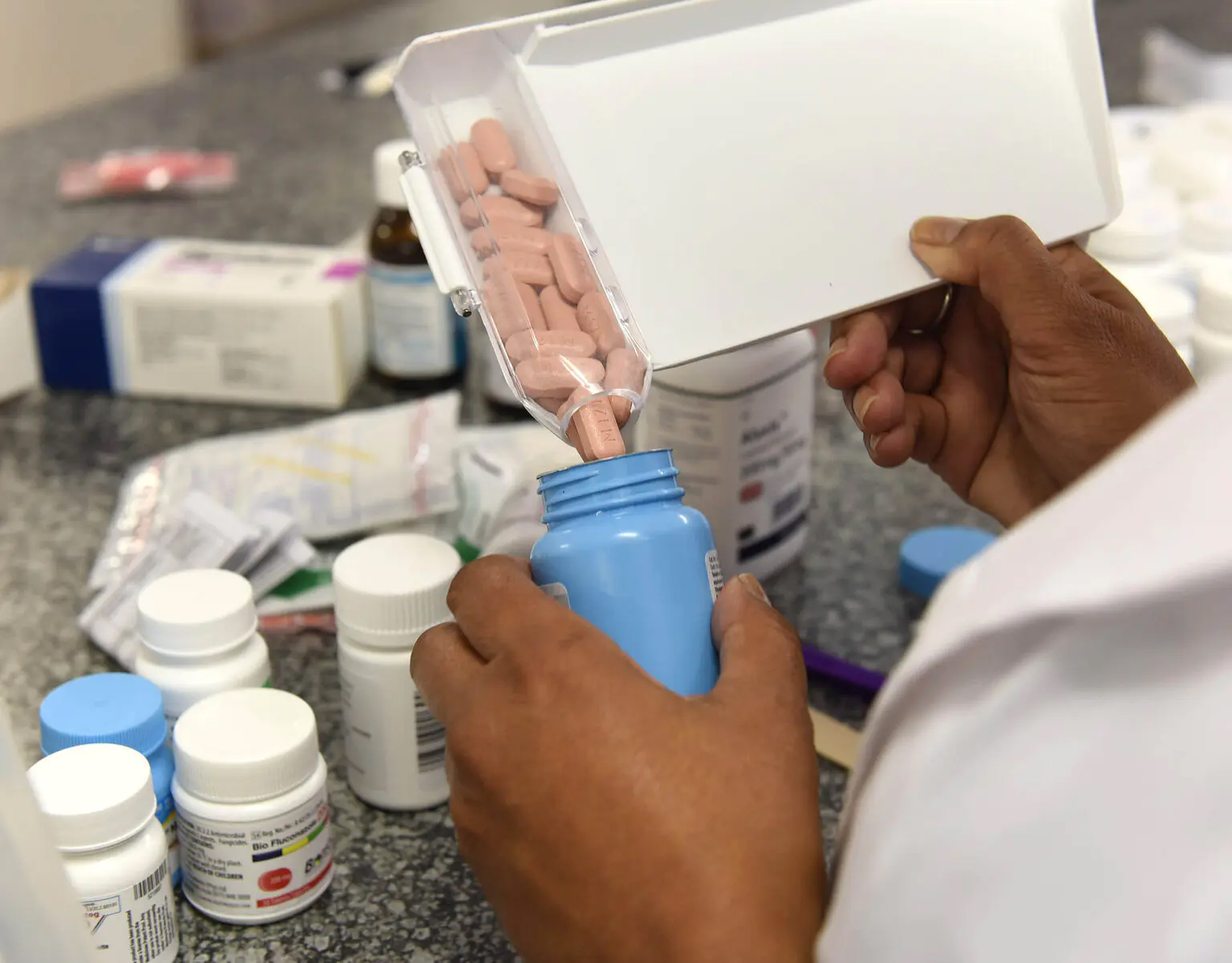
In 2013, Brooklyn Chest was a pioneering administrator of the drug bedaquiline to treat multidrug-resistant TB in South Africa. (Photo: Nasief Manie / Spotlight)
Adapting to patients’ needs
Sonnie recalls a schoolgirl who studied for and wrote her matric exams at the hospital. “So she was physically ill and frail. She needed to be here, she couldn’t go back to school. But she was anxious about being in matric and not having access to schooling and falling further and further behind. So it was about making that connection with the social worker and with the school. So she had access to her learning material, while we focused on her physical well-being. And that makes a big difference – if we can decrease the anxieties patients have while they’re here.”
Sonnie adds that TB treatment takes a long time, during which they endeavour to provide stimulation to patients, such as the pair with farming experience who started participating in gardening, eventually installing an entire irrigation system on the premises.
Read more in Daily Maverick: Yes! We can end TB in South Africa
“And they were so proud of their handiwork,” she says, “of the contribution they were able to make to the place in which they stay. So, still being of value, even though you are a patient here – knowing that you can still contribute is significant. It makes a big difference to the spirit.”
Regarding job fulfilment, Te Riele says: “I’ve had a number of patients over the years who have been really very sick. And certainly, if it was any other disease, they would’ve died, but TB is curable. And so the clinical satisfaction comes from not ever giving up on your patient. You may be offering them palliative care, but because TB is curable, you are often surprised and they turn the corner. So that’s happened many, many times.”
Sonnie points out that Te Riele’s recent innovations at the hospital include having patients go home while equipping them with portable oxygen and administering medication through a peripherally inserted central catheter line.
In a time of widespread budget cuts, both Sonnie and Te Riele sigh, noting a dire need for “a lick of paint” at the premises. Sonnie shrugs, signalling that budget constraints are not unique. She notes that the Department of Health has allocated funds to have six of their nine wards upgraded in the near future.
The hospital welcomes volunteers who read to their young patients. For more information call the children’s ward on 021 508 7432. DM
NOTE: This article is the first in a Spotlight special series on the history and ongoing relevance of several old hospitals in South Africa. Not only do we find the stories of these places fascinating, we think they provide valuable cultural and historical context for healthcare services today.
This article was published by Spotlight – health journalism in the public interest.



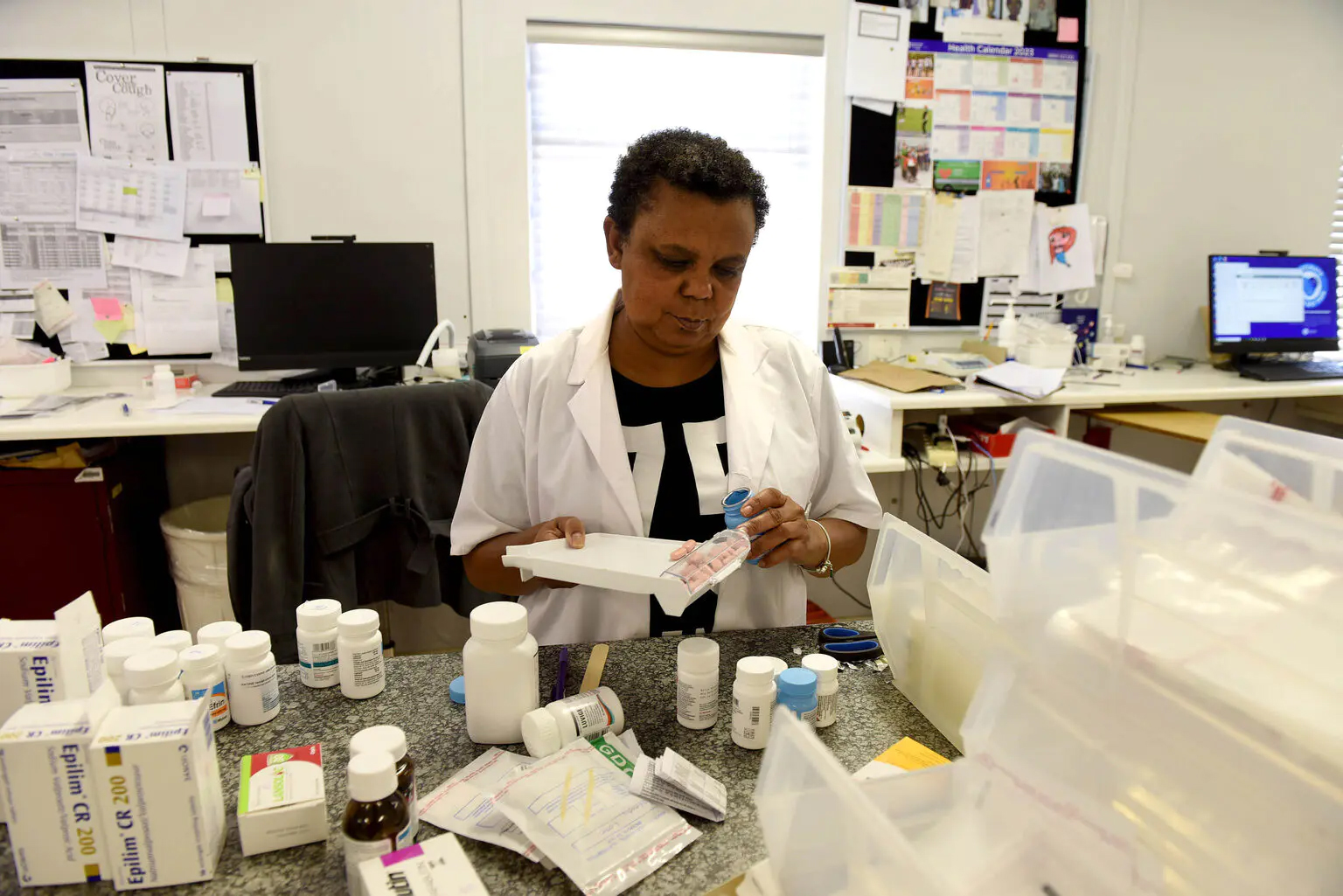
















 Become an Insider
Become an Insider
Comments - Please login in order to comment.